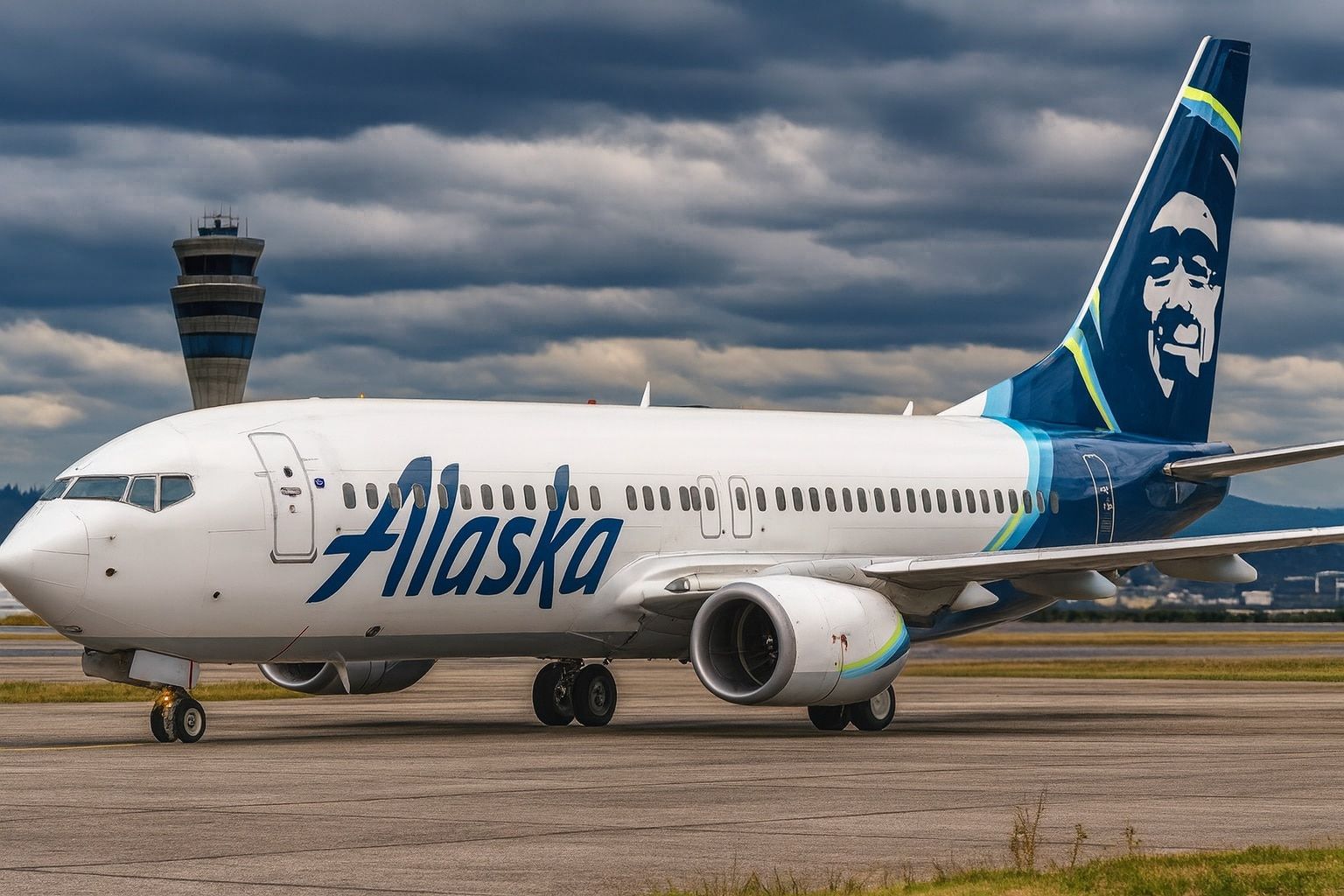- Major IT Outage on Oct. 23 grounded all Alaska and Horizon Air flights nationwide from ~3:30 pm PT until late evening [1]. The carrier lifted the ground stop by 11:30 pm local time and said operations were “restored” shortly after midnight [2].
- Massive Disruption: More than 229 flights were canceled and hundreds more delayed as the system failure spread across the network [3] [4]. Flight tracking data showed dozens of departures stalled; by morning the total cancellations exceeded 250 [5] [6].
- Cause & Scope: Alaska reported a data center hardware failure triggered the outage around 3:30 pm, affecting multiple “key systems” needed to manage flights [7]. The airline emphasized safety was never compromised. It also stressed this was not a cyberattack [8]. Hawaiian Airlines (an Alaska Air Group unit) was unaffected, but Horizon Air (regional unit) was grounded under the same stop [9] [10].
- Repeat Incident: This marks Alaska’s second major IT crash in 2025. A similar outage in July halted the fleet for about three hours [11] [12]. Analysts warn the recurrence highlights airlines’ reliance on “aging IT systems” and is a “wake-up call” to upgrade back-end infrastructure [13].
- Financial and Stock Impact: The news came as Alaska was wrapping up Q3; the carrier reported $3.77 billion in revenue (up 23% YoY) but lowered its 2025 profit forecast [14] [15]. In after-hours trading the Alaska Air Group (NYSE: ALK) share price slid about 2.2% to $46.63 [16]. The company postponed its Oct. 24 earnings call to focus on passenger support [17] [18].
- Passenger Backlog: Airports saw long queues and stranded travelers. By 8 pm local time on Oct. 23, Seattle’s airport alone had ~80 cancellations and 315 delays, and numbers grew overnight [19]. Frustrated flyers described chaotic scenes and lengthy waits; one passenger called it “scary, to have an IT shutdown when people are trying to get into the air” [20]. Alaska apologized and instituted a flexible rebooking policy to help affected guests [21] [22].
Outage Timeline and Airline Response
On Thursday afternoon (Oct. 23), Alaska Airlines reported a “significant IT outage” at its Seattle-area data center [23]. Soon after 3:30 pm Pacific, the airline imposed a system-wide ground stop on all Alaska and Horizon flights [24]. (Hawaiian Airlines flights were not halted.) By 11:30 pm PT the carrier announced the ground stop was lifted and flights were resuming [25]. In a midnight Pacific statement, Alaska said it was “working to get our operations back on track as quickly and safely as possible” [26].
Alaska urged passengers to check flight status before going to airports and noted it was enforcing a flexible rebooking policy to accommodate disrupted travelers [27]. The company expressed regret for the “inconvenience” and promised to transport guests “to their destinations as quickly as we can” [28] [29]. In social media posts, the airline fielded customer queries and said its IT team was fixing an “error on our system” [30]. Alaska has not blamed any external cyber threat; it explicitly called the outage “not a cybersecurity event” [31] and unrelated to its recent merger with Hawaiian [32].
Cancellations and Passenger Impact
The ground stop sent shockwaves through the network. By late Thursday night, airline reports and tracking sites tallied 229+ cancellations (with more likely to come as the airline rebalanced its schedule) [33] [34]. CBS News and Fox Business confirmed that over 229 flights were scrubbed by Friday morning [35] [36]. FlightAware data showed roughly 256 canceled flights through early Friday and nearly 250 delayed [37]. Sky Harbor in Phoenix, Sea-Tac in Seattle, and other hubs saw dozens of departures shelved or pushed late.
Local Seattle media reported an increasingly desperate scene. By 8:10 pm PT, 80 Alaska/Horizon flights had already canceled and 315 were delayed at Sea-Tac [38]. Travelers described chaotic boarding areas and lengthy holds. One Seattle passenger, Wilder McCullough, was stopped on a taxiing plane and eventually made to disembark, calling it “scary” that an IT failure struck mid-boarding [39]. Another, Mark Welpman, waited three hours after 4:20 pm before learning his flight would be canceled due to crew-hour limits [40]. Passengers on tarmacs, like San Diego-bound Sherry Diantonio, endured bus transfers and even engine fumes while stuck in ground traffic [41]. Many took to social media and news hotlines to vent. Alaska’s prompt apologies and offers of hotel or rebooking accommodation aimed to calm public anger [42] [43].
Causes and Context
According to Alaska’s official statement, the glitch started with a failure at a primary data center [44]. This knocked out critical operational systems (ticketing, dispatching, etc.), forcing the airline to freeze flights in place [45] [46]. Alaska assured that the safety systems were unaffected and emphasized there was no sign of a hack [47]. Industry analysts note, however, that aviation relies on complex software networks, and even non-malicious hardware faults can paralyze an airline. As one tech journalist observed, Alaska’s repeated crashes “highlight[] the aviation industry’s dependence on aging IT systems — and the dire consequences when they fail” [48].
This outage follows a pattern of tech disruptions in U.S. aviation. Earlier in 2025, Hawaiian Airlines (owned by Alaska) suffered a hack that disrupted its systems [49]. Google and security firms have warned that sophisticated criminal groups (e.g. “Scattered Spider”) are targeting airlines [50]. In that context, Alaska was swift to clarify “this is not a cybersecurity event” [51]. (Notably, a Reuters summary reminded readers that Google & Palo Alto Networks have warned of hackers eyeing the aviation sector [52].) Alaska also faced an IT crisis in July 2025 — a three-hour outage that similarly grounded flights [53] [54]. And just before that, in April 2024, a software bug in the weight/balance system grounded the fleet for a day [55] [56]. Each incident has spurred calls for investment in modern, resilient back-end systems.
Financial Fallout and Outlook
Alaska Air Group’s stock dipped on the news. The share price closed around $46.63 on Oct. 23, down about 2.2% [57]. (YTD the stock had already fallen ~28% amid fuel-cost worries and previous missteps.) Investors and analysts will be watching closely for any impact on Alaska’s Q4 guidance. The company reported Q3 revenue of $3.77 billion (up 23% from a year ago) [58] but noted higher costs (fuel, maintenance, etc.) were cutting into profits [59]. On Oct. 24 it postponed its quarterly earnings call – a rare move, done so teams could “prioritize guest support and operational recovery” [60]. That suggests management expects some operational hiccups to carry into late October.
While flight delays will add crew overtime and possibly compensation costs, robust travel demand could help mitigate revenue losses. Still, analysts warn that the airline may face fines from regulators or customers if baggage/itineraries were mishandled. Some carriers saw only temporary stock dips after similar glitches (e.g. Southwest’s 2022 system crash), as loyal passengers rebook and pent-up demand remains high. For Alaska, market watchers are now weighing whether this “inconvenience” will have any lasting effect on bookings or loyalty. The company’s flexible travel policy and outreach efforts aim to retain goodwill.
What’s Next? Recovery and Moving Forward
By Friday Oct. 24, operations were resuming, but experts caution rippling delays are likely for days. Alaska itself warned that “additional flight disruptions are likely as we reposition aircraft and crews” [61]. (Planes that missed turns on Oct. 23 must return to base overnight; crews hit duty limits; schedules must be rebuilt.) The FAA and other airlines are coordinating to manage the East/West Coast flow. Travelers are urged to recheck flight status before departure and to allow extra time at airports.
In the bigger picture, industry observers say Alaska’s outage is a stark reminder that even modern airlines rely on legacy IT stacks. As one tech analysis put it, airplanes may be high-tech marvels, but “their back-end systems still ‘fly’ on decades-old code – a recipe for more midnight groundings if not addressed” [62]. Going forward, regulators and airline executives may push for more investment in secure, redundant networks. The quick restoration of service this time is positive, but many will be watching: will Alaska (and other carriers) take this wake-up call seriously to bolster their tech — before the next outage? [63] [64]
Sources: Official Alaska Airlines statements [65] [66]; Reuters, CBS, FoxBusiness, and NDTV news reports [67] [68] [69] [70]; regional news interviews [71]; TS2.tech analysis [72]; stock data [73].
References
1. news.alaskaair.com, 2. news.alaskaair.com, 3. news.alaskaair.com, 4. www.ndtv.com, 5. www.reuters.com, 6. www.cbsnews.com, 7. news.alaskaair.com, 8. news.alaskaair.com, 9. news.alaskaair.com, 10. gyalchisarshog.com, 11. gyalchisarshog.com, 12. ts2.tech, 13. ts2.tech, 14. www.reuters.com, 15. stocktwits.com, 16. www.foxbusiness.com, 17. www.reuters.com, 18. stocktwits.com, 19. komonews.com, 20. komonews.com, 21. news.alaskaair.com, 22. www.ndtv.com, 23. news.alaskaair.com, 24. news.alaskaair.com, 25. news.alaskaair.com, 26. news.alaskaair.com, 27. news.alaskaair.com, 28. news.alaskaair.com, 29. www.ndtv.com, 30. www.reuters.com, 31. news.alaskaair.com, 32. news.alaskaair.com, 33. news.alaskaair.com, 34. www.ndtv.com, 35. www.ndtv.com, 36. www.foxbusiness.com, 37. www.cbsnews.com, 38. komonews.com, 39. komonews.com, 40. komonews.com, 41. komonews.com, 42. news.alaskaair.com, 43. www.ndtv.com, 44. news.alaskaair.com, 45. news.alaskaair.com, 46. www.flightglobal.com, 47. news.alaskaair.com, 48. ts2.tech, 49. www.reuters.com, 50. www.reuters.com, 51. news.alaskaair.com, 52. www.reuters.com, 53. gyalchisarshog.com, 54. ts2.tech, 55. ts2.tech, 56. www.reuters.com, 57. www.foxbusiness.com, 58. www.reuters.com, 59. stocktwits.com, 60. www.reuters.com, 61. news.alaskaair.com, 62. ts2.tech, 63. ts2.tech, 64. www.reuters.com, 65. news.alaskaair.com, 66. news.alaskaair.com, 67. www.reuters.com, 68. www.ndtv.com, 69. gyalchisarshog.com, 70. www.cbsnews.com, 71. komonews.com, 72. ts2.tech, 73. www.foxbusiness.com










